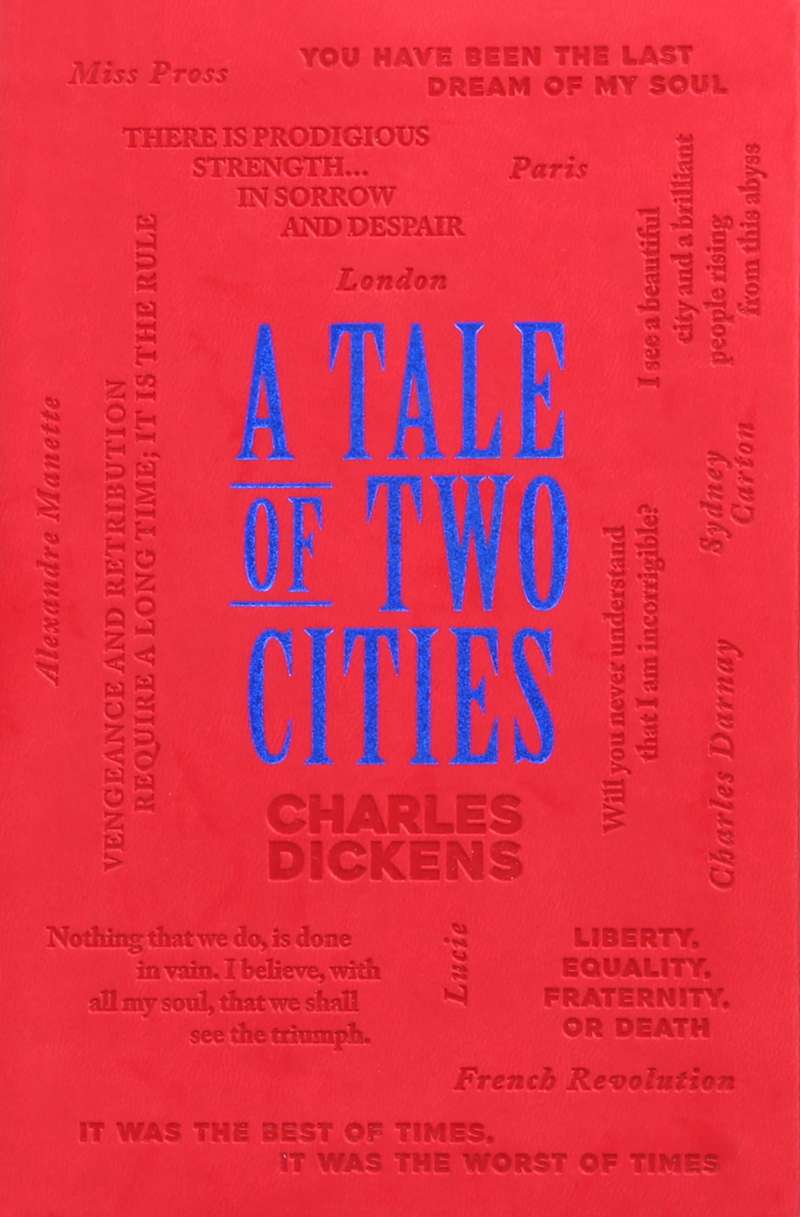By Brian Boone
February 7 marks what would be the 112th birthday of sublime English author Charles Dickens. He wrote many masterworks of 19th century, from the warm A Christmas Carol, to the scrappy Oliver Twist, to the pioneering epic, A Tale of Two Cities. Let’s take a long visit to the latter.
Add the Word Cloud Classic to your collection.
THE FRENCH DISPATCH
Of the 14 novels Charles Dickens wrote, the only one with any action set in any place other than England is A Tale of Two Cities. The titular two cities: London, and Paris (which is in France).
SERIAL BRAND
As he generally did with his fiction, Dickens published A Tale of Two Cities in serial form. From April to November 1859, 31 weekly installments appeared in All the Year Round, a brand new publication created and operated by Dickens himself, following a dispute with his old publishers Bradbury & Evans. With more than 200 million copies since sold, A Tale of Two Cities is technically the best-selling self-published book of all time.
THANKS, JOHN
Dickens never said exactly why he dedicated A Tale of Two Cities to United Kingdom prime minister Lord John Russell, who had left that office after a six-year term in 1852. “In remembrance of many public services and private kindnesses,” Dickens wrote, likely referring to how Russell politically affected the social change that the author’s works suggested needed to happen in cruel, dirty Industrial Revolution-age England. Real-life versions of characters like Oliver Twist and David Copperfield benefited from Russell’s passage of the Factory Act, which limited working hours, and the Public Health Act.
OPENING THOUGHTS
A Tale of Two Cities begins with arguably the most famous opening line in Western literature: “It was the best of times, it was the worst of times.” It’s also a tidy summary and precise thesis statement for the novel—it contrasts the lives of the privileged and elite in London with those of the downtrodden and suffering in French Revolution-era Paris.
A TALE OF THREE ORIGINS
Dickens’ inspiration for A Tale of Two Cities was three-fold. In the 1850s, he visited Paris, where the effects of the French Revolution, particularly the destruction and suffering, remained relevant decades after the fact. He also read the widely praised The French Revolution: A History by Thomas Carlyle, which put an empathetic, human face on the complicated historical event from the revolutionaries’ perspective. And just before he started work on the novel, Dickens starred in The Frozen Deep, a play by English playwright Wilkie Collins. Dickens portrayed a character in the middle of a love triangle who sacrifices himself, and he took that plot and combined it with his reflections on the French Revolution.
CODED MESSAGES
Madame Defarge concealed the names of the revolutionaries’ enemies in her knitting, an early literary example of code. Dickens was likely inspired by the work of his friend, Ada Lovelace, credited as the first computer programmer.
HOLY LITERARY INSPIRATION, BATMAN!
A Tale of Two Cities has been adapted often and in creative ways. It was the basis of five early movies—including four silent ones (the first, in 1911, was released in weekly installments, just like the source novel)—and then a 1935 Academy Award nominee for Best Picture. It inspired three musicals, including 1968’s Two Cities: The Spectacular New Musical and 2006’s Two Cities, set during the Russian Revolution and which subs out Paris for St. Petersburg. Dickens’ novel also figures heavily on the 2012 Batman movie The Dark Knight Rises. Villain Bane goes after the ruling class and knits during a trial scene; revenge and rivalry are prominent themes; and the last lines of the film are taken verbatim from the conclusion of the novel.
If you’ve never read A Tale of Two Cities, you simply must. Also a treat of a re-read, it’s available now from Canterbury Classics in a delightful portable and durable edition.









